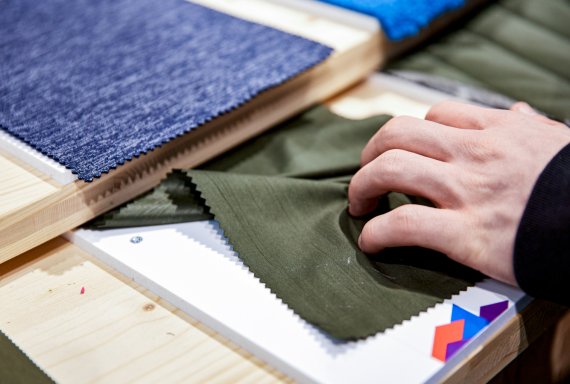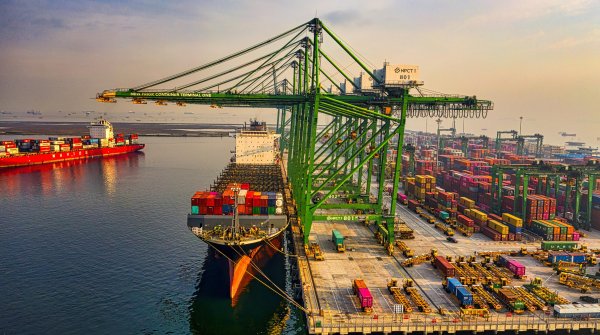Technical, social and communicative challenges as well as regulatory requirements determine the everyday work of the sports industry. On the one hand, there are new image risks due to reputation damage, name shaming or negative influences from "dis-influencers". On the other hand, global sourcing pressures and advances in technology and biology are forcing the textile industry to take a collaborative approach. It needs a macro vision in a rapidly changing environment. Artificial intelligence, metaverses, virtual reality - this coming 4.0 world needs to be understood quickly! Performance indicators are shifting and the requirements for outdoor and leisure sports industries need to be redefined.
In the sporting context, performance is a goal, and governance is the means to achieve those goals. Care Leadership can be defined like this: Leading by engaging oneself, acting empathetically, giving meaning to what employees and teams do, and improving working conditions for everyone. The purpose of this new Key Performance Indicator (KPI) is to guide a project or brand that integrates the common good. Some organizations or certifications are already championing them (Bcorp™, Ellen Macarthur Foundation, Fashion for Good, Textile Exchange). Visionary leaders rely on inspiration to foster relationships with suppliers and on information to contribute to innovation and business development. Pure-player leaders like Nike are playing the holistic marketing card, for example, with their new Instagram account: Nike Well Collective.
Some brands even work directly with NGOs to drive legislative change. This is the case, for example, with Picture Organic™, which is a member of the association "En mode climat" and is working to solve the problem of "vice premium". Or all the brands that collaborate with The Microfibre Consortium™ or the Fair Wear Foundation™. Those brands that collaborate best and achieve exceptional audit scores can advance to the Fair Wear Leaders category. This leadership principle helps create levers for sustainable redirection, a strategic action plan and measurable impact goals that will be reflected in design, sourcing, purchasing, logistics, e-commerce, etc. Is this the embodiment of leadership in times of crisis?
"With more than 580 members of the collective, we are using our influence to drive regulations that will force all players in our industry, including us, to do better." - Picture Organic ™
Although the Green Deal does not set specific requirements for textile sourcing, it indirectly impacts the fashion industry and promotes more sustainable practices in the textile supply chain. It also provides market opportunities for solution developers, certification bodies, suppliers and traceability actors. There are four key focus areas for the textile industry: promoting sustainable sourcing practices, circularity, social responsibility, and transparency and traceability.
Sourcing includes, for example, using recycled or organically grown fibres, adopting more environmentally friendly manufacturing processes, or reducing water and energy consumption. It also includes promoting the use of recognized environmental certifications and labels, and establishing tracking systems to ensure that products are manufactured in an ethical and environmentally friendly manner. For example, this is data that will be part of the eco-label. The downside is that end consumers have a hard time grasping the complexity of some of the data. To simplify the presentation, the UN and UNEP have just published a guide to responsible communication in the fashion industry. It aims to align communication in the fashion industry with the 1.5-degree climate target and broader sustainability goals.
A critical mind and collaboration between stakeholders and departments can help avoid greenwashing. Some of the specific requirements related to textile sourcing that are susceptible to greenwashing may be set out in other regulations or initiatives. The REACH regulation for chemicals or certification standards such as GOTS (Global Organic Textile Standard) and OEKO-TEX™ are examples. These regulations and initiatives complement the general objectives of the Green Deal. The European Commission also monitors so-called "imported" emissions.
"Since June 2021, the European Commission has been proposing a mechanism to adjust the EU's CO2 limits (MACF). This instrument would apply on imported products the current CO2 pricing for emission-intensive European products." - Ministry of Economy and Finance on the adjustment of the European Union CO2 limits.
Metaverses are a new field of activity for marketing and communication. Thanks to artificial intelligence, the creative field is becoming almost limitless. The Fabricant Studio™ is the first digital fashion house to develop exclusively digital clothing collections and collaborations. It operates at the intersection of fashion, gaming and blockchain and has already collaborated with Puma™, Napapirji™ and Peak Performance™. Adidas recently unveiled the "ADIDAS EXPERIENCE AT MVFW 2023." The Adidas Metaverse series consists of eight unique garments that have already been sold as part of their Metaverse community strategy. In terms of enhancing customer relationships, the Metaverse can deliver immersive experiences like those seen in recent Louis Vuitton campaigns with Pharrell Williams. Personalization and international engagement can also be found here, as well as the development of collaborations and communities, which are strong in live shopping behaviours in Asia. The metaverse is increasingly attracting interest from companies looking for innovative customer relationship and engagement strategies. Gaming commerce is definitely on the upswing.
Whether through bio inspiration with bio sourcing and biomimicry, fibre-to-fibre circularity, extended producer liability, extended materials due diligence, or potential chemical contamination, a whole new world of professions related to textiles is already emerging. These specialists are material breeders, biotechnology engineers who can manipulate alternative materials (leather, feathers, bio components and algae). They are chemists who promote eco-friendly dyeing solutions and their circularity, or operational circularity experts who move from linear to circular production, which even includes the "second life phase" of the material. Some brands are already doing this. There are also specialized environmental impact lawyers (biodiversity, CO2 emissions, and water management) who can help assess the risk associated with the sourcing source or country of production.
All of these new areas of expertise could be overseen by Chief Sustainable Officers (CSOs), Chief Performance Officers (CPOs), or Sustainable Product Owners (SPOs) who can help guide the challenges of supplier sourcing, data collection, and verification.

The environmental, social and financial costs of climate change impacts are becoming increasingly visible, especially in terms of tight raw material supplies. Immediate tangible action is becoming a real requirement, not only in terms of ethics and image, but also in terms of trade. The reindustrialization of certain industries in Europe, such as linen, or the creation of new industries, such as the post-consumer fibre cycle, are well underway. Technology underpins the possibilities for high value-added production, as evidenced by the Chamatex 4.0 factory or the CETIA operations centre for cutting and sorting fibres and accessories. Reindustrialization was also one of the points of the Fashion Pact signed in 2019 with targets for 2030, and the question of European reindustrialization of the textile industry should be asked primarily for products that can be sourced locally or nearby and have appropriate technologies and low-energy resources. These impact questions address categories 4, 5 and 6 of the carbon footprint.
The main arguments must concern sourcing, purchasing, and production, rather than transportation, which surprisingly often has the lowest carbon impact in a product's LCA.
From a marketing and influencer marketing standpoint, artificial intelligence could have a powerful operational force. Photoshop™ and its new Sensei Gen AI image editing tool could fundamentally change the way campaigns are created. Adobe says Photoshop's generative fill tool, which is included in the beta version, will simplify the creative process, reduce manual intervention and help make informed decisions and guide marketing initiatives. To connect design and sales, there are companies such as Virtual Vr™ and Threekit™ that specialize in 3D visualization solutions and product customization.
Recently, Threekit launched GPT™, which provides a product personalization feature using keywords and linking to the brand's product catalogue. The result: a 3D configurator, virtual photography and augmented reality from conception to sale on the e-commerce website. By integrating 3D shopping capabilities, the TaylorMade™ golf brand is using this technology for its golf clubs.
"We had a vision to make our website even better. Threekit made that vision a reality, and the results speak for themselves." - John Gonsalves, Vice President Direct to Consumer & Digital at TaylorMade Golf Company
Artificial intelligence is becoming a tangible tool for creating communication campaigns on a large scale. The Etam brand launched its first, 100% virtual campaign for swimsuits in summer 2023. Subsequently, Mobile AI with the Google Virtual Try On™ feature can enable users* to see how the products would look on them. By using the smartphone camera directly, the products are digitally projected onto the face or silhouette via augmented reality. This can facilitate the purchase decision process by showing users how a product fits their style before they buy it online or go to a store.
Positive harmonization of global supply chain management is needed to drive a robust and sustainable system with more accurate data, less waste and overproduction. This will not happen without technology and verification frameworks. This industry belongs to all of us, so let's work together to make digital and sustainable know-how a norm in an optimized and viable business-to-human (B2H) business model.

 Sports BusinessSki Mountaineering Goes Olympic: What Milano-Cortina 2026 Means
Sports BusinessSki Mountaineering Goes Olympic: What Milano-Cortina 2026 Means
- ISPO awards
- Mountain sports
- Bike
- Design
- Retail
- Fitness
- Health
- ISPO Job Market
- ISPO Munich
- ISPO Shanghai
- Running
- Brands
- Sustainability
- Olympia
- OutDoor
- Promotion
- Sports Business
- ISPO Textrends
- Triathlon
- Water sports
- Winter sports
- eSports
- SportsTech
- OutDoor by ISPO
- Heroes
- Transformation
- Sport Fashion
- Urban Culture
- Challenges of a CEO
- Trade fairs
- Sports
- Find the Balance
- Product reviews
- Newsletter Exclusive Area
- Magazine





